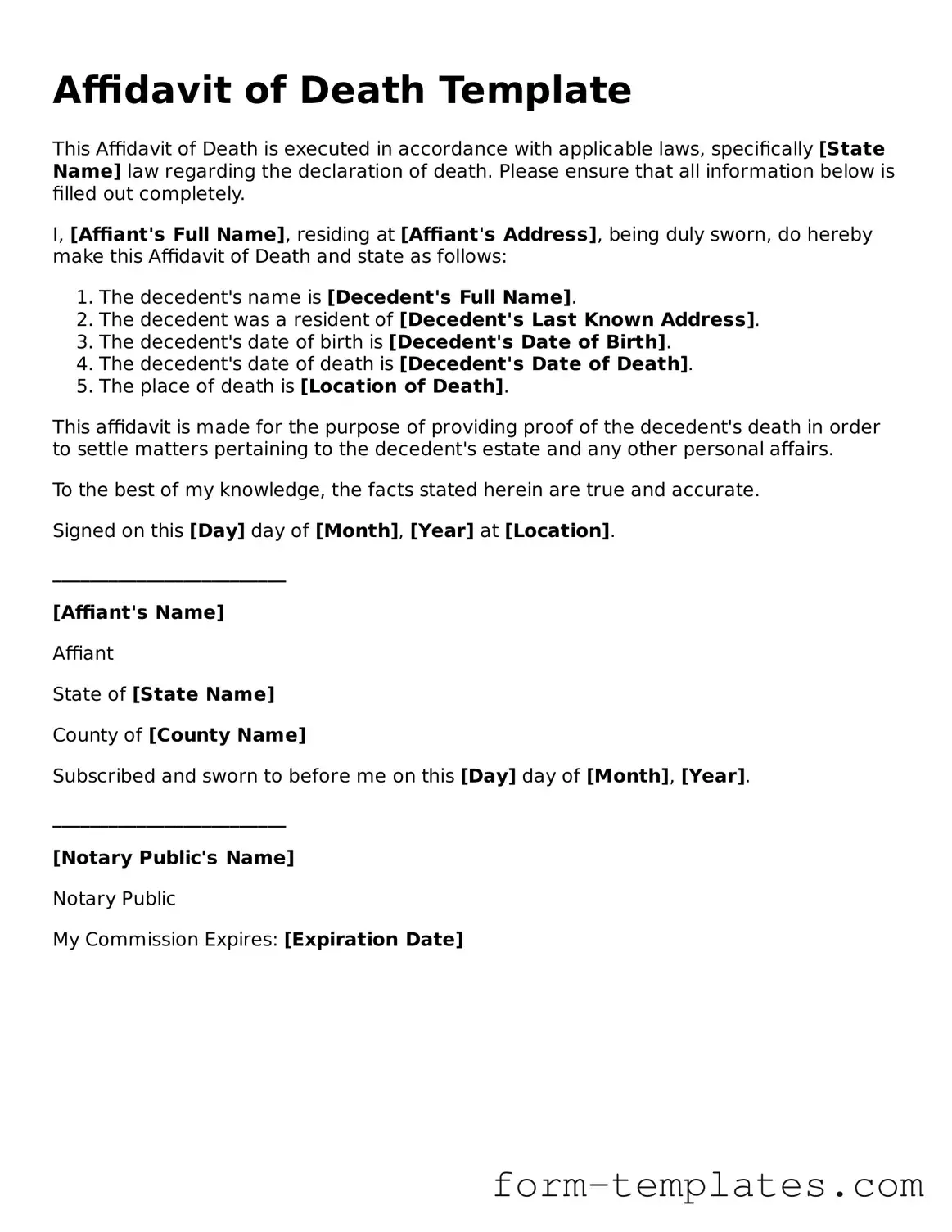Affidavit of Death Template
This Affidavit of Death is executed in accordance with applicable laws, specifically [State Name] law regarding the declaration of death. Please ensure that all information below is filled out completely.
I, [Affiant's Full Name], residing at [Affiant's Address], being duly sworn, do hereby make this Affidavit of Death and state as follows:
- The decedent's name is [Decedent's Full Name].
- The decedent was a resident of [Decedent's Last Known Address].
- The decedent's date of birth is [Decedent's Date of Birth].
- The decedent's date of death is [Decedent's Date of Death].
- The place of death is [Location of Death].
This affidavit is made for the purpose of providing proof of the decedent's death in order to settle matters pertaining to the decedent's estate and any other personal affairs.
To the best of my knowledge, the facts stated herein are true and accurate.
Signed on this [Day] day of [Month], [Year] at [Location].
_________________________
[Affiant's Name]
Affiant
State of [State Name]
County of [County Name]
Subscribed and sworn to before me on this [Day] day of [Month], [Year].
_________________________
[Notary Public's Name]
Notary Public
My Commission Expires: [Expiration Date]
